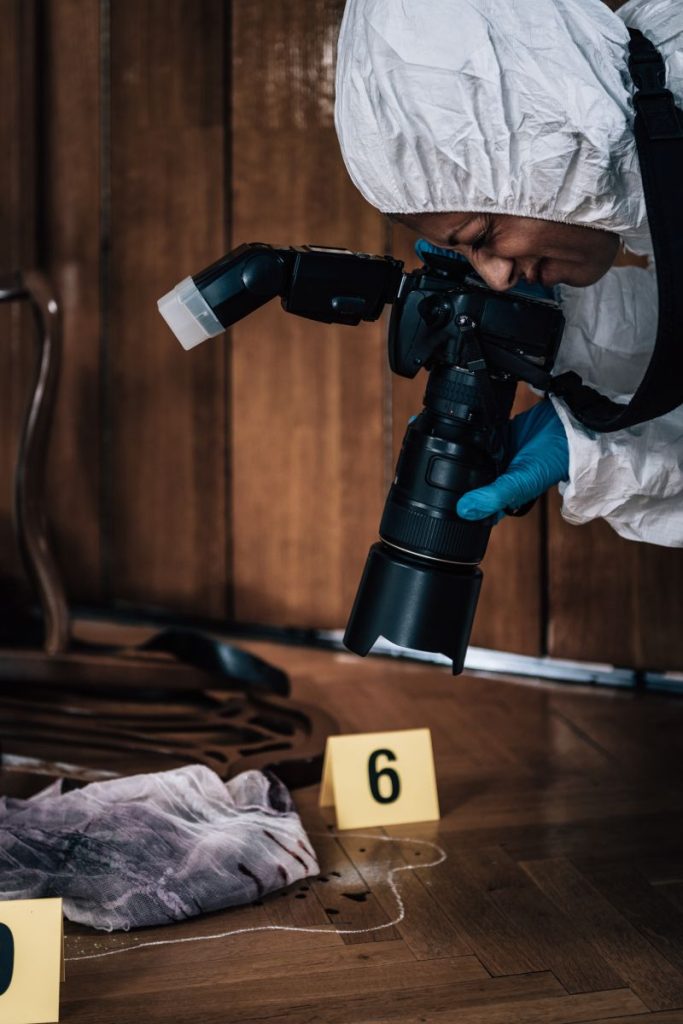Mirroring the rapid evolution and ubiquity of technology over the last few decades, advances in technology have made sizeable contributions to the field of forensics.
These manifest themselves not as entirely original technologies, but as innovations in existing technologies in order to increase effectiveness and reduce costs. Haveapoke brought to you some of these advances include:
Automated Sniffer Dogs
Police dogs such as bloodhounds are a legendary image of policework and forensics, and their ability to identify and track scents have made them invaluable police assets for decades. They are especially useful in the location and identification of cadavers.

However, they may soon become anachronistic, as Agile Technologies has developed a device that serves the same function with much more accurate readings. The Light-weight Analyzer for Buried Remains and Decomposition Odor Recognition, or LABRADOR for short, is an apparatus made up of 12 sensors that can identify 30 classes of chemicals that are emitted by decaying bodies.
Using the visual display, the LABRADOR can identify bodies with higher accuracy than dogs can, which can be misled by false readings of air and water movement. Operated like a metal detector, a LABRADOR can find a body buried in a 40-acre field with an accuracy of 15 metres. This drastically reduces the time and labour required to locate missing bodies and removes the cost of raising and caring for specialized police dogs.
Fluorescent Fingerprint Enhancement
Forensic investigation of fingerprints has been a field of study for over 100 years, but improvements and evolutions of the technology are still emerging. The most common issue with fingerprints faced by forensic investigators is fingerprints that don’t have enough contrast or definition to give an accurate reading.
To improve results, forensic scientists fume fingerprints with chemical compounds, most commonly cyanoacrylate (Super Glue). However, on a light-coloured surface, the fingerprint can still be too indistinct to take an effective photograph.

Until now, the solution has been to apply a second coat of a fluorescent chemical. However, these chemicals are toxic and must be applied in a controlled environment, which drastically increases the time and cost of a forensic investigation. There is also the inherent risk that this sequence will degrade and compromise a DNA reading.
For three decades, research chemists have been trying to develop a safer, cheaper alternative. Developed by the French Laboratory of Supramolecular Photochemistry and the firm Crime Scene Technology, Lumicyano is a safe, inexpensive chemical innovation that benefits one of the most common methods of forensic investigation. Working as both a fluorescent and an adhesive, Lumicyano allows a more accurate reading of fingerprints in a fraction of the time, using a basic UV light.
Forensic Glass Analysis
Laser Ablation Inductively Coupled Plasma Mass Spectrometry, or LA-ICP-MS for short, is an innovation in using broken glass as a forensic tool. While it may seem obscure, broken glass is often present in incidents such as burglaries and car accidents. By analyzing samples of broken glass at a crime scene, forensic scientists can establish such factors as the direction of a gunshot, tools used in a robbery or the direction of an impact.
With LA-ICP-MS, tiny trace samples of glass on skin and clothing can be traced back to broken windows at a crime scene, in a similar fashion to DNA evidence. LA-ICP-MS can break down glass samples to an atomic level, meaning that there is no limit to the size of the sample used.

High-Speed Ballistics Photography
The refinement of high-speed digital cameras means that advanced camera forensics is now an easily accessible tool to forensic departments. High-speed cameras are used to test and match projectile trajectory, impacts and exit wounds and can be repeated at a low cost in order to establish a match with absolute certainty.
DNA Sequencing
The use of DNA in forensic analysis has been by far the greatest innovation in forensics of the last few decades. However, it is not perfect, as DNA can degrade and some forms of samples leave gaps in necessary information. DNA testing is also a lengthy process and can extend investigations by weeks or even months. DNA sequencers not only allow more comprehensive readings of DNA, the automation involved means that the labour involved is decreased by orders of magnitude.







